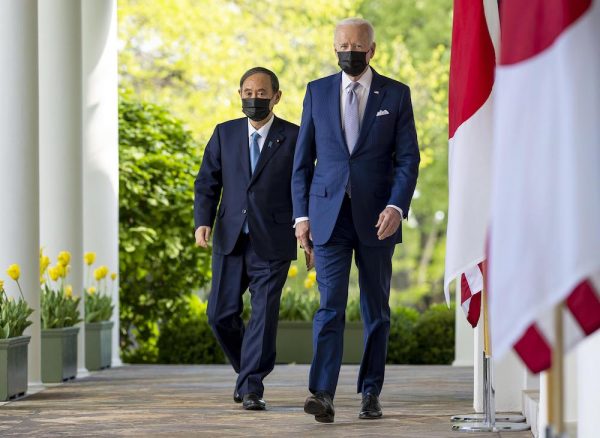Inviting Suga to the White House as Biden’s first face-to-face meeting with another leader was meant to underline Japan’s importance as a US ally. It demonstrated to China that, despite Beijing’s efforts to woo Japan over the course of the Trump administration, Japan remains firmly allied with the United States. Biden used the opportunity to show domestic and foreign audiences alike that he rejects his predecessor’s denigration of partners and allies, and he will work closely with them to counter China’s growing influence. In Washington’s view, the meeting was a success.
The meeting also went well for Tokyo’s representatives. For Suga, the meeting was a chance to show the Japanese public that, despite his reputation for being a locally-minded politician, with little experience in foreign policy, he can be trusted to manage Japan’s relationship with the United States. Amid renewed tensions over the longstanding Senkaku Islands dispute the trip was also a signal to China that Japan maintains firm US support under the US–Japan Security Treaty. The leaders’ statement also included a message to North Korea that Japan maintains US backing including on the issue of Japanese abductees. The meeting was an opportunity for Suga to show that he deserves to be re-elected as president of the Liberal Democratic Party (LDP) this September, and that the LDP should be re-elected in general elections that must be called by October.
The three documents agreed between the two leaders — the US–Japan Global Partnership for a New Era statement, the US–Japan Competitiveness and Resilience (CoRe) Partnership and the US–Japan Climate Partnership on Ambition, Decarbonization, and Clean Energy — constitute the framework for cooperation between the governments. They build on the Joint Statement of the US–Japan Security Consultative Committee (2+2) issued in Tokyo on 16 March after a 2+2 meeting between US State Secretary Antony Blinken, US Defense Secretary Lloyd Austin, Japanese Foreign Minister Toshimitsu Motegi and Japanese Defense Minister Nobuo Kishi.
What attracted particular attention in Japan were the passages in the US–Japan Global Partnership for a New Era leaders’ statement that expressed ‘concerns over Chinese activities that are inconsistent with the international rules-based order’. The leaders underscored ‘the importance of peace and stability across the Taiwan Strait’ and encouraged ‘the peaceful resolution of cross-Strait issues’. This is the first mention of Taiwan in a US–Japan leaders’ joint statement since Richard Nixon and Eisaku Sato in 1969.
The Chinese government expressed its ‘strong dissatisfaction’ with the joint statement and countered that the expressions of concern meddled in China’s affairs. The United States and Japan are ‘ganging up to form cliques and fanning bloc confrontation’, according to the Chinese Foreign Ministry. Some in Japan worry that Suga may have gone too far in aligning with the United States against China and should have been more ambiguous in his language. Former Japanese vice foreign minister Yukio Takeuchi told the Asahi Shimbun that Japan had ‘crossed the Rubicon’ and must prepare for ‘retaliation’. Suga, under criticism from Beijing, stated in a Diet meeting on 20 April that the reference to Taiwan in the joint statement ‘does not presuppose [Japan’s] military involvement at all’.
The Japanese maxim soron sansei, kakuron hantai — to agree in principle but disagree on specifics, or to place the devil in the details — should be kept in mind. The four partnership documents contain specific programs and initiatives in which the United States and Japan will engage to deepen their ‘global partnership for a new era’. Yet the documents contain an abundance of statements of principles, aspirations and direction. Turning these into concrete action and tangible results will require considerable work, since whether in security, trade, technology, climate change, or human rights, American and Japanese concepts, interests, and priorities vis-a-vis China are not identical.
Though the meeting accomplished the objectives of both governments, there was a glaring perception gap between the two countries. The meeting was the top story in Japan across all news channels. In some newspapers, it occupied the first four pages. Yet few in the United States, except for foreign policy experts and Asia specialists, were even aware of the meeting. Suga appeared on-screen for about eight seconds on PBS NewsHour because he happened to be in the frame when a journalist questioned Biden on Iran. None of the five Sunday news talk shows covered the meeting amid discussions on Iran, Afghanistan, Russia, Cuba and special envoy John Kerry’s recent visit to China on climate change.
This difference in public attention and perception between the two countries may significantly affect the future implementation of the ‘global partnership for a new era’.
Glen S Fukushima is former deputy assistant US trade representative for Japan and China and was president of the American Chamber of Commerce in Japan.

